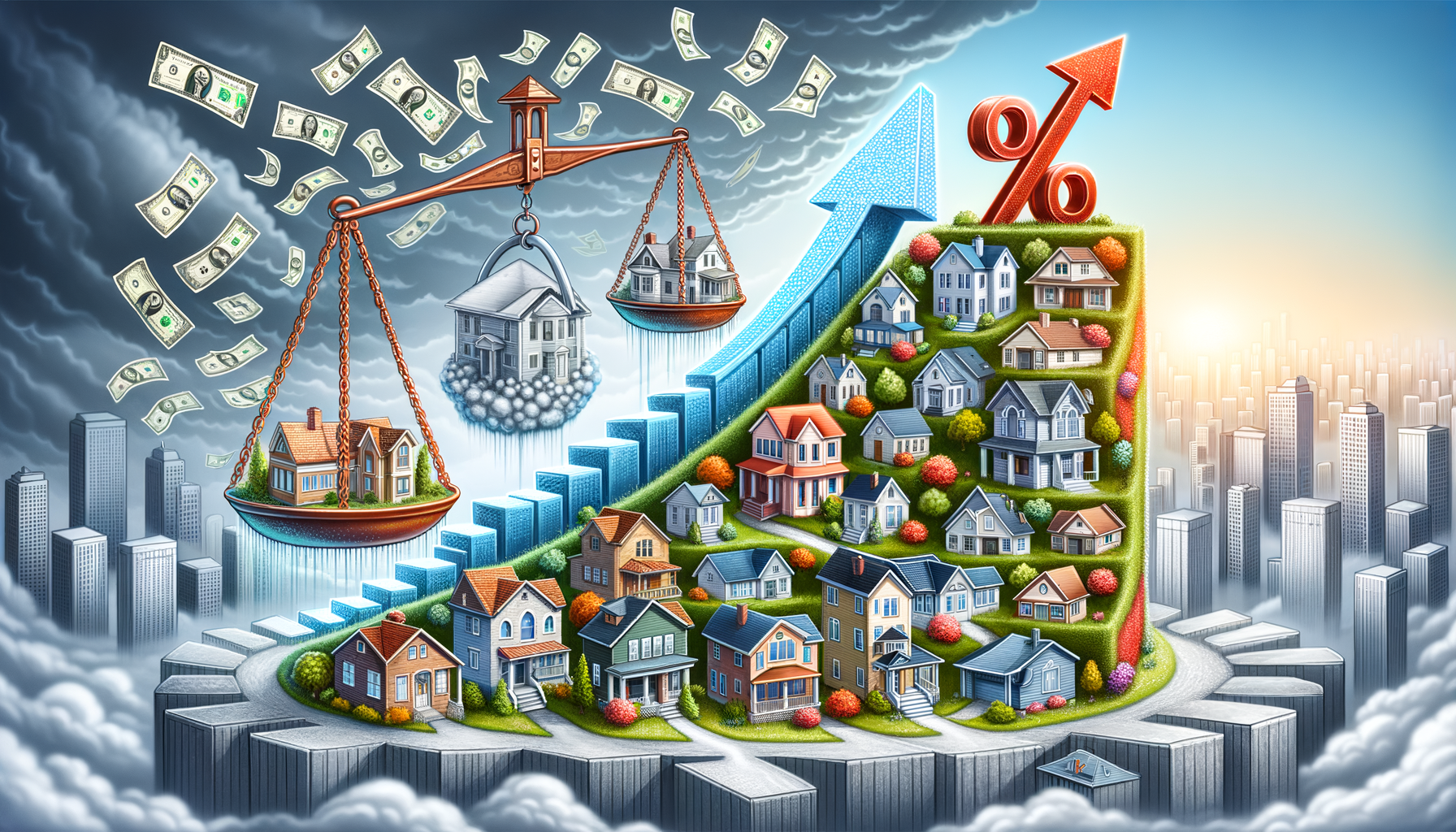“Kickstarting 2024: The Surprising Rise in Mortgage Demand Despite Increased Interest Rates”
Increasing interest rates do not seem to be deterring prospective homeowners as there has been an almost 10% rise in mortgage applications at the onset of the year. Despite the marginal increase in rates, the surge forward indicates that homebuyers are undeterred by the rate fluctuation and are capitalizing on the prospect of possible future rate hikes.
In the economic sphere, financial experts anticipate potential increases in the benchmark interest rate set by the U.S. Federal Reserve. This forecast extends to home loans, with anticipations of further increase in loan interest rates. Surprisingly, this has not led to dampened prospects in the housing market. In fact, this “cost” appears to be promoting more proactive buyers.
Significantly, the rise in mortgage applications reveals interesting trends about the home buying scenario. The hike in applications does not merely include refinancing existing mortgages but also encompasses fresh home purchase applications. This upward trend reveals the pent-up demand for homes in spite of growing costs.
Both purchases and refinancing applications have seen significant growth. Refinancing is proving to be the more popular choice, with increased activity due to the chance to lock in lower rates before the anticipated rate increase. Furthermore, homeowners are also considering cash-out refinancing options, where part of the home equity is transformed into a loan.
The purchase market on the other hand, remains fueled by a high demand for properties and a continually low-supply factor. Alas, that’s not the case for high-cost homes or luxury properties. The demand here has been less forceful.
One reason propelling home buyers into the market is the fear of future rate hikes. A buy-now mentality has been established, as consumers realize that while rates currently may be on the mistier side, the future could hold steeper prices.
The recent numbers suggest that buyers aren’t just looking to secure a new home, but are also eager to lock in affordable rates before the potential increases. This gives a sense of urgency to potential buyers, and galvanizes them into taking proactive steps. A surge in interest rates could potentially lead to a significant increase in monthly payments, serving as a key motivation for people to jump into the market and snap up these deals while they last.
When examining specific data, the volume of applications has increased by a significant number. The refinance index recorded a substantial increase, while the purchase index saw a modest upward shift. Importantly, these figures are adjusted for seasonal influences, holidays, and other such variables, thereby offering a true reflection of the current market situation.
Adjustable-rate mortgages, which were a huge hit during the housing bubble, also started the year on an upswing. These loans are typically tied to shorter-term interest rate benchmarks, which suggests their popularity may increase further should the Fed raise rates.
However, the uptick in applications is not without its ramifications. Experts caution that higher rates might somewhat affect purchasing power. As rates rise, the amount that a consumer can borrow while keeping the mortgage payment affordable decreases, which hampers buying power. On the other hand, it also puts pressure on sellers to consider pricing more competitively.
Another downside is the tightening credit standards as lenders attempt to mitigate risk. This has put potential buyers with lower credit scores in a disadvantageous position, facing higher rates and more stringent loan conditions.
Factors such as inflation, pandemic effects, supply chain disruptions, and labor market fluctuations have also played a part in this narrative. These influences have driven costs and prices upward, impacting both the housing market and the wider economy. Furthermore, they have provoked a response from federal departments, with the Federal Reserve increasingly signalling rate hikes, thereby compelling buyers to consider an early entry into the housing market.
The state of the housing market is also affected by the broader economic landscape. Matters such as the employment rate, wages, and overall economic health influence consumers’ ability to take on new mortgage debt. As these factors shift over time, they could bring about changes in mortgage demand.
In conclusion, it appears that the current climate of the housing market, coupled with external economic pressures, has encouraged buyers to defy rising interest rates. There has been an increased sense of urgency among potential-homeowners to capitalize on the present rates before expected future hikes emerge.
This trend of increased mortgage applications in a climate of rising interest rates showcases the resilience of the housing market. As we go forth, it will be intriguing to see how fluctuations in interest rates and the broader economic context will affect mortgage demands and the vivacity of the housing market.

